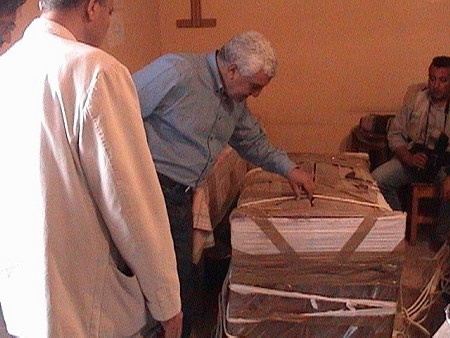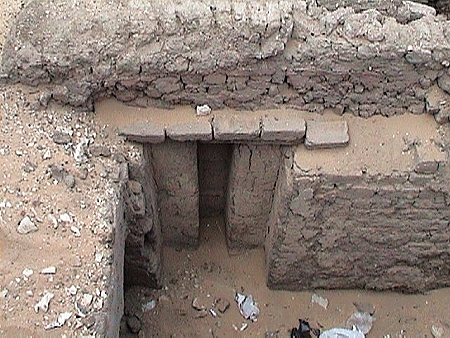|
|
|
New Discovery from Dynasty 1
Zahi Hawass
April 2003
I created a new department within the Supreme Council of Antiquities (SCA)
called the Department of the Study of Pyramids. There are three expeditions that
are working now under me. The first is the excavation around the pyramid of Teti,
the first king of Dynasty 6, Old Kingdom. This is the area that we discovered
the pyramid of Queen Khuitt and the tomb of Teti's son as well as some New
Kingdom artifacts. The second expedition is the expedition of the tombs of the
pyramid builders at Giza and the third expedition is the excavation around the
tombs of Dynasty 1 at Saqqara.
|
|
|
The site was excavated during the last century by Walter Emery, who discovered large mastabas that date to Dynasty 1, about 3000 BC. Emery thought that these tombs belonged to the kings of Dynasty 1 but, before Emery's discovery the father of Egyptology, Sir F. Petrie discovered tombs in Om El Gaab in Abydos that also belonged to the kings from Dynasty 1.
 |
Egyptologists wondered: Why the kings from Dynasty 1 appeared to have two tombs, one in the north at Saqqara and one in the south at Abydos. They thought that maybe the tomb in Saqqara represented the king as the king of the south. Other scholars suggested that the tombs at Abydos could be for the temporary burial and the actual burial is in Saqqara. More theories included the ideas that the Abydos tombs could be for the storage of the canopic jars or the dummy for the solar cult or the crowns. However, recently scholars, found that the tombs of Saqqara are not for the kings of Dynasty 1 but for the officials who lived under the kings from this dynasty. Therefore, the tombs in Abydos are the tombs of the kings from Dynasty 1. |
| The Abydos tombs are typical royal tombs because they are fronted with by a
stela that has the Srkh (palace fa‡ade topped with Horus wearing the double
crown and the name of the king written inside the palace fa‡ade. An enclosure
wall also surrounds the tombs and near them is the temple of Shunet-el Zabib. In 1995 we wanted to build a new storage for the antiquities at Saqqara and while we were making the plans for this storage facility we discovered a large mastaba that dates to Dynasty 1, located 50 m. to the west of Imry. The tomb is about 52 m X 32 m and 3 m high. The entrance of the tomb was blocked with stone rubble and in the burial chamber we found large quantities of broken pottery, flint tools and pieces of alabaster that contain the name of the king Nefer-sieka. He is not a well-known king because very few monuments have been found for him. |
 |
 |
We stared our excavation in this area and found ten small tombs located to the east of the large one. It is apparent that the tombs were re-used in the New Kingdom and Late period from the shafts that were cut into them. In one of the tombs revealed a unique false door made of mudbrick and it has a wooden drum topped with a long wooden panel on it a scene shows the deceased sitting in front of an offering table that contains offerings and also a list of offerings. On the top of the head of the deceased there is the remains of the name but it is not clear and we were not able to read it. This could be the oldest form of false door ever found. |

We also found another shaft about 4b m cut into the rock. I went
down this shaft and found that it was completely sealed with mudbrick. It took
me over an hour to remove the mudbricks one by one to see what was inside, the
oldest mummy to be discovered in Egypt. It is a skeleton covered with linen in
good condition. The skeleton was in the fetal position.